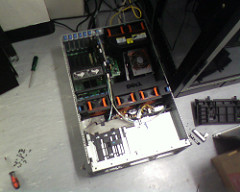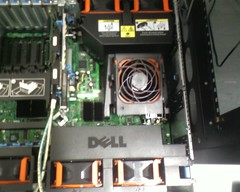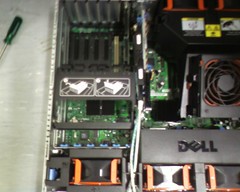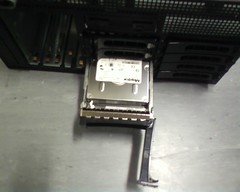The following photo set shows the progress of the rack rebuild that I performed yesterday.
It starts with the old rack setup and then progresses through each level of the build:
It was good fun putting all the new equipment into the rack, but it is very time consuming
especially when everything needs to be adjusted to fit. We had to pull all the vertical
rails as well, so everything had to come out and be rebuilt. It is fun doing it while
the everyone is at work as well, you have to plan the build so you only have one shutdown
during the lunch break! It all ended up working out nicely in the end, everything
is on rails and is easily accessible.
My suggestions for anyone looking to build/rebuild a rack are:
- Allocate twice as much time as you think you will need
- Pull as much out as you can
- Don’t start running cables until you have as much equipment in as possible
- Get a bag of zip ties
- Plan everything beforehand
- Get as many decent screwdrivers and spanners as you can
It is worth it in the end. We now have better air flow, if there is water in the room
the servers will be fine, better accessibility (important especially in emergency
hardware failures) and better physical security.













 A company can only ‘appear’ to be capable of caring if it has invested in systems that ensure each customer interaction is responded to in the best possible way (for both the customer and the company). This requires a lot of business strategy planning and scripting, often using inputs such as customer surveys, psychologists, marketing managers and front line staff. Getting to know your customer clearly takes a lot of time and effort.
A company can only ‘appear’ to be capable of caring if it has invested in systems that ensure each customer interaction is responded to in the best possible way (for both the customer and the company). This requires a lot of business strategy planning and scripting, often using inputs such as customer surveys, psychologists, marketing managers and front line staff. Getting to know your customer clearly takes a lot of time and effort.